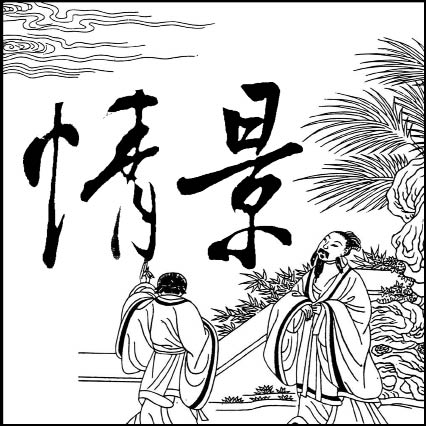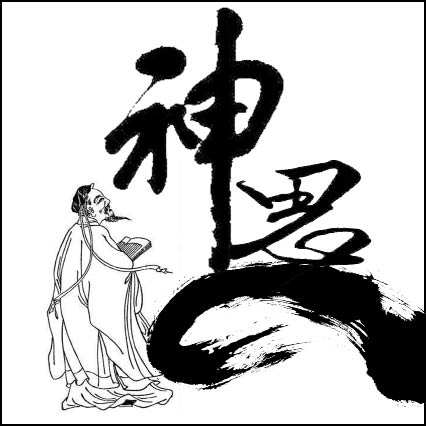引例 Citations:
情景
Qíng jǐng
Sentiment and Scenery

指文学作品中摹写景物与抒发情感的相互依存和有机融合。“情”指作者内心的情感,“景”为外界景物。情景理论强调二者的交融,情无景不立,景无情不美。是宋代以后出现的文学术语,相对于早期的情物观念,情景理论更加重视景物摹写与情感抒发、创作与鉴赏过程的互相依赖与融为一体。
This term refers to the mutual dependence and integration of an author’s description of scenery and objects, and his expression of feelings in his literary creation. Qing (情) is an author’s inner feelings, and jing (景) refers to external scenery or an object. The theory of sentiment and scenery stresses integration of the two, maintaining that sentiment can hardly be aroused without scenery, and that scenery or an object cannot be appreciated without sentiment. This term appeared in the Song Dynasty. Compared with earlier notions about sentiment and scenery, this one is more emphatic about fusing the depiction of scenery with the expression of feelings, and the process of creation with that of appreciation.
引例 Citations:
◎景无情不发,情无景不生。(范希文《对床夜语》卷二)
(景物若没有情感的注入就不会出现在诗歌中,情感若没有景物的衬托就无从生发。)
Scenery has no place in poetry unless there are feelings for it; feelings cannot be stirred without the inspiration of scenery. (Fan Xiwen: Midnight Dialogues Across Two Beds)
◎情景名为二,而实不可离。神于诗者,妙合无垠。巧者则有情中景、景中情。(王夫之《姜斋诗话》卷下)
(情与景虽然名称上为二,但实际上不可分离。善于作诗的人,二者融合巧妙,看不出界限。构思精巧的则会有情中景、景中情。)
Sentiment and scenery seem to be two distinct things, but in fact they cannot be separated. A good poet knows how to integrate them seamlessly. An ingenious combination of sentiment and scenery means scenery embedded in sentiment and vice versa. (Wang Fuzhi: Desultory Remarks on Poetry from Ginger Studio)
神思
shénsī
Imaginative Contemplation

文艺创作过程中的一种精神状态,指的是作者在饱满的情感驱动下,超越时间与空间的限制,进入到自由想象或特殊的灵感状态,最后通过特定的文学艺术形象和语言而传达出来,创作出自然而美好的文艺作品。这一术语,在魏晋南北朝的文艺理论中得到广泛运用,南朝刘勰《文心雕龙》对此有专门论述。“神思”强调它是文艺创作中一种独特的心理活动,不同于其他认识活动。
The term refers to a state of mind in the process of literary and artistic creation. It suggests that the author, fully inspired by emotions, transcends the constraints of time and space, and enters into a state of free imagination or a special mood for literary and artistic creation, before producing a natural and beautiful work of literature or art, either in language or in imagery. This term was popularly used in literary and artistic theories of the Wei, Jin, and Southern and Northern Dynasties. Liu Xie of the Southern Dynasties devoted one chapter especially to this term in Carving a Dragon at the Core of Literature. With emphasis on the unique mental activity in literary and artistic creation, imaginative contemplation is different from other cognitive activities.
◎古人云:“形在江海之上,心存魏阙之下。”神思之谓也。文之思也,其神远矣。(刘勰《文心雕龙·神思》)
(古人说:“身在民间,心却想着朝廷。”这说的就是神思。文章写作时的想象和思绪,其神奇是可以超越时空的呀!)
An ancient saying goes, “Though he lives among the common folks, deep in his heart he concerns himself with affairs of the imperial court.” This is called imaginative contemplation. When one writes, his imaginations and thoughts may transcend time and space. (Liu Xie: Carving a Dragon at the Core of Literature)
引例 Citations:
◎属文之道,事出神思,感召无象,变化不穷。(萧子显《南齐书·文学传论》)
(写文章的规律,来自于神思,人对万物的感触没有形迹,变化无穷。)
The guiding principles for literary creation come from imaginative contemplation. Man’s feelings and thoughts about the external world are formless and highly changeable. (Xiao Zixian: The History of Southern Qi)
Selected from Key Concepts in Chinese Thought and Culture published by Foreign Language Teaching and Research Press.